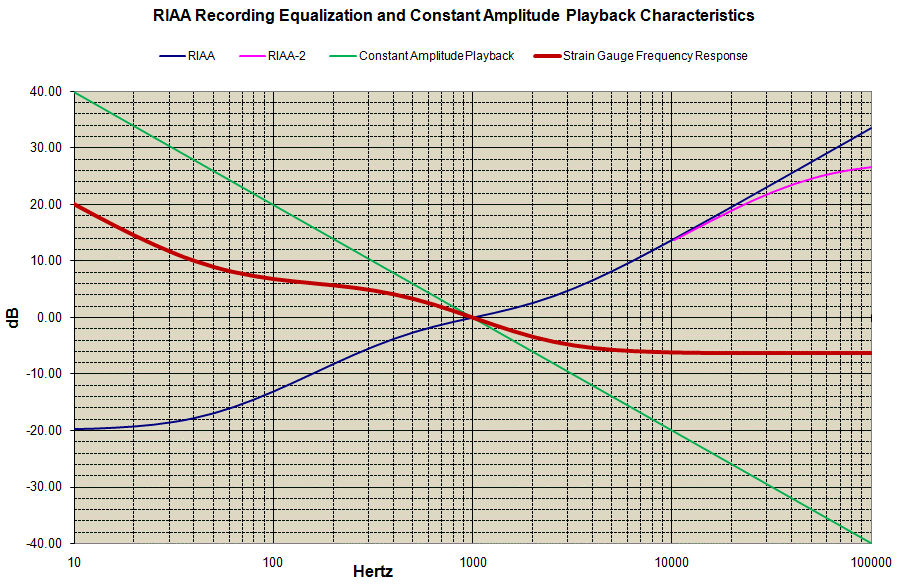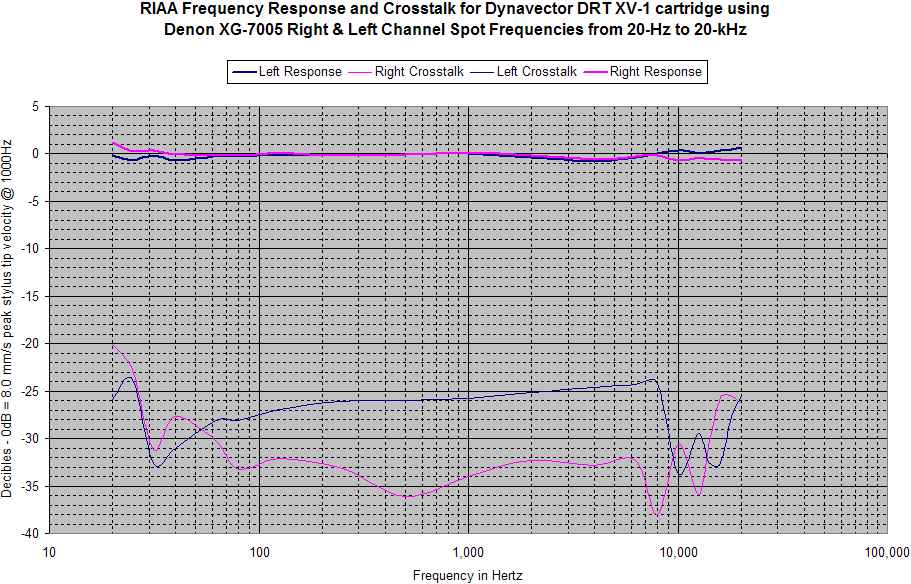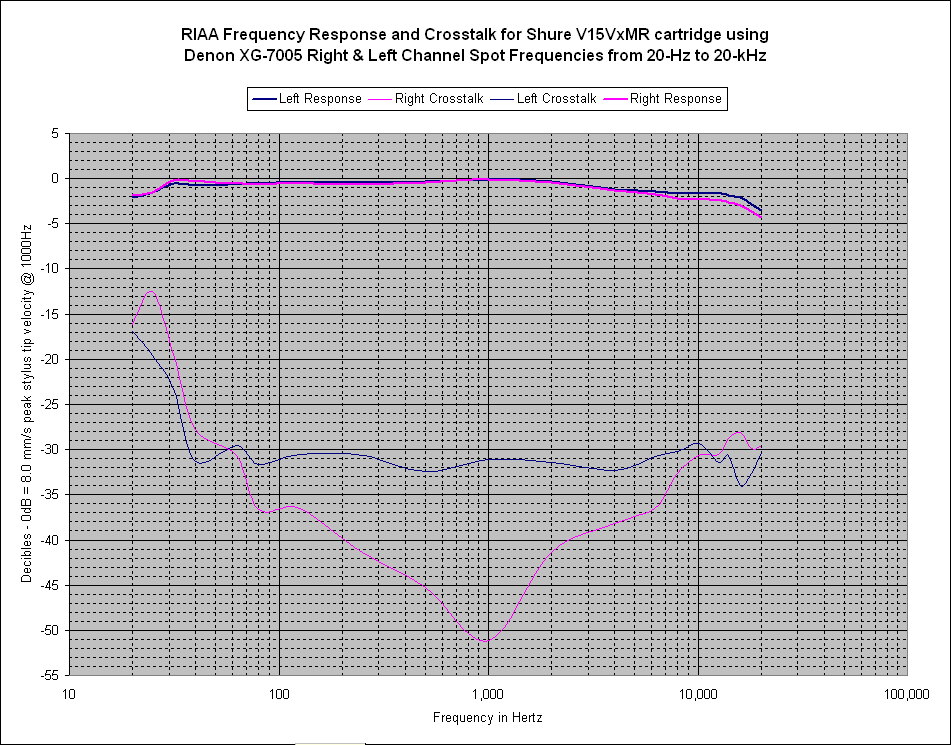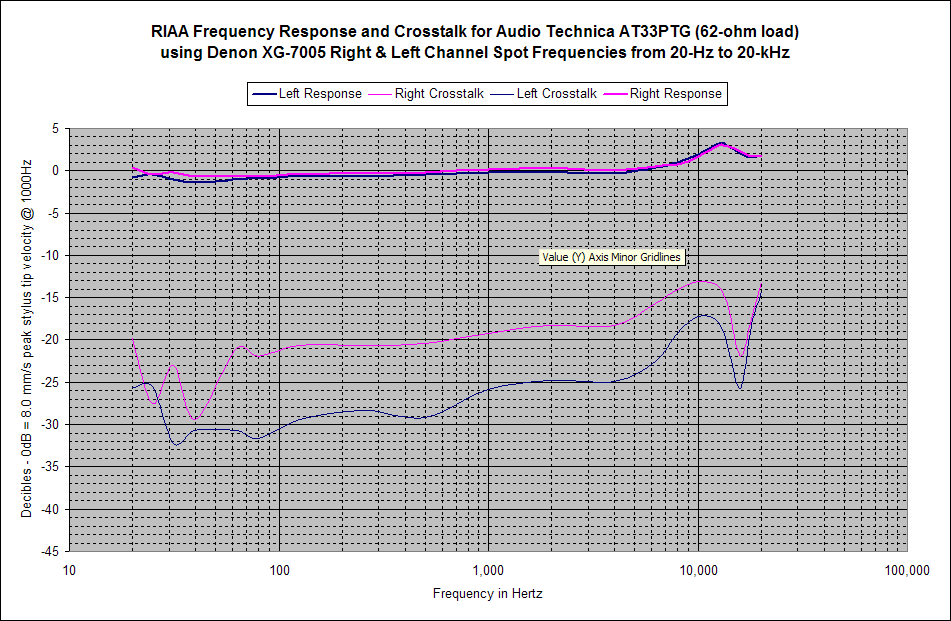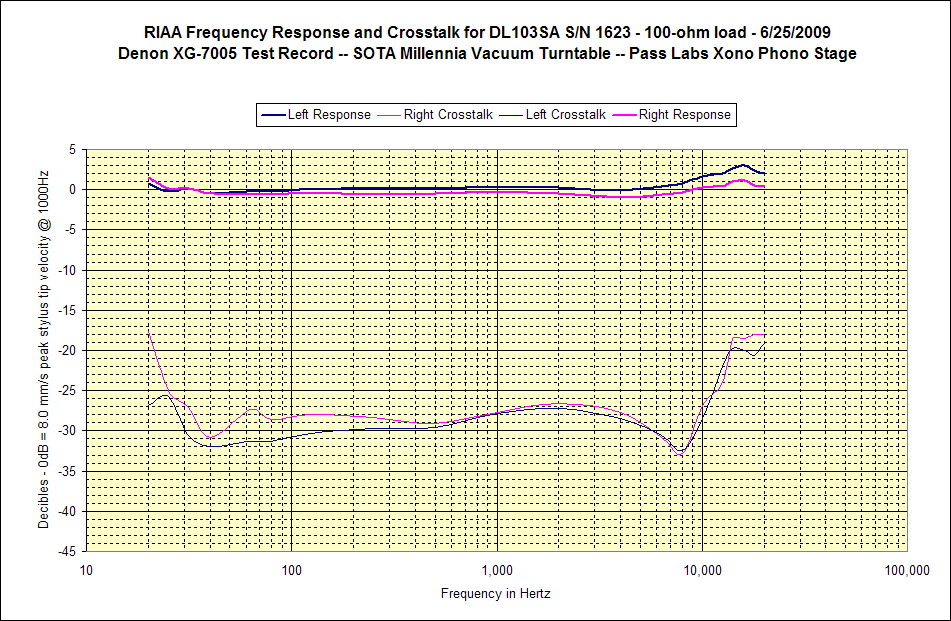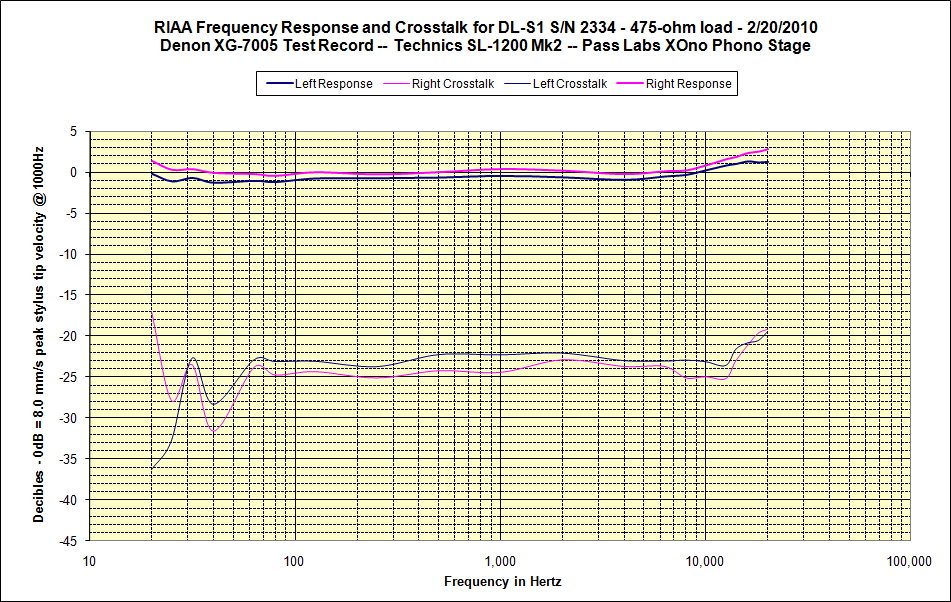Soundsmith explains RIAA and Strain Gauge
69.124.35.248 |
||
| Posted on December 11, 2010 at 13:48:58 | ||
|
Posts: 179
Location: New York Joined: December 17, 2006 |
I get so many requests to explain why the Soundsmith Strain Gauge does not need RIAA, that I thought I would post here at AA a recent response I gave to a reviewer in the effor to present a simplified explanation, BUT from a new persepctive. It is my hope that to those who have not understood it before that this "simplifed" view will be of help to them in understanding this. The purpose if this is NOT to provide a detailed explanation of why RIAA is used, but to explain why displacement devices (Strain Gauge, ceramic, etc...) work fairly well (please don't attack that statement anyone)without needing to employ the RIAA playback EQ. This meant to open a BASIC discussion if needed, not an attack of the priciple. Many thanks for that. The Strain Gauge cartridge does not use or require an RIAA playback filter because it inherently plays the RIAA recording EQ curve used on the record without the need to employ such. This is because the RIAA recording curve used to make the original master recording with a magnetic cutter head COMPENSATES for that cutter head's velocity response and results in a groove of basically equal “displacement” for an amplitude flat input signal. How does that happen? Simply. Without RIAA, the "velocity" response of the magnetic cutter head would normally cut a large displacement groove for low frequencies, and less so as the frequency rises. One could actually cut a record without RIAA with a magnetic cutter, and play it back with a magnetic cartridge WITHOUT using RIAA playback, and get a perfectly flat response, BUT without the benefits of RIAA (more recording room, lower noise, etc,...). By using RIAA during recording, which LOWERS the amplitude (and therefore displacement of the groove) as the frequency lowers and raises it as the frequency increases, it "COMPENSATES" for the natural displacement differences of a magnetic cutter head's response and RESULTS in a basically equal displacment groove, for a flat input signal! Since normal mangetic cartridges are velocity sensitive devices (whose output is sensitive to velocity), they need the RIAA inverse filter to result in a flat playback response of a groove cut with an RIAA recording curve and a magnetic cutter. However, since the Strain Gauge is a DISPLACEMENT sensitive device, it automatically produces a basically flat response from a RIAA encoded groove, which as stated above, is a basically equal displacement recorded groove. The Strain Gauge cartridge is a displacement device, producing an output that is dependent and directly proportional to the amount of displacement of the stylus, NOT the velocity, as in magnetic cartridges. A magnetic cartrdige's output voltage is dependent on the velocity of the stylus, like any magnetic generator. The Strain Gauge therefore inherently plays the RIAA encoded groove nearly correctly. If one inspects the RIAA EQ, one will discover that there are discrepancies that occur where a displacement type cartridge deviates from a perfectly flat playback of the recorded RIAA groove, and therefore will not produce a perfectly flat response. Attempts made in the distant past to absolutely correct Strain Gauge cartridges for any amplitude anomaly have required equalization circuits, which not only can require adding circuitry, but also introduce unwanted phase or time shifts. It is the Soundsmith’s belief that human hearing is much more forgiving of amplitude errors than short range time errors, so we have made what we beleive to be acceptable and minimal efforts to correct for any amplitude deviation from absolute flatness. Peter Ledermann/Soundsmith |
|
| RE: Thanks,, posted on December 12, 2010 at 11:23:32 | |
|
Posts: 374
Joined: April 19, 2001 |
Thanks for shearing your knowledge. Your postings are most interesting and informative !! Rgds Jan |
| Yeah, I really liked it when I heard it, too. /nt\, posted on December 13, 2010 at 17:14:35 | |
|
Posts: 24048
Location: Central Kentucky Joined: December 20, 2000 Contributor Since: January 29, 2004 |
|





